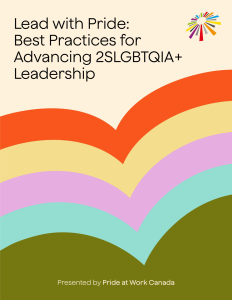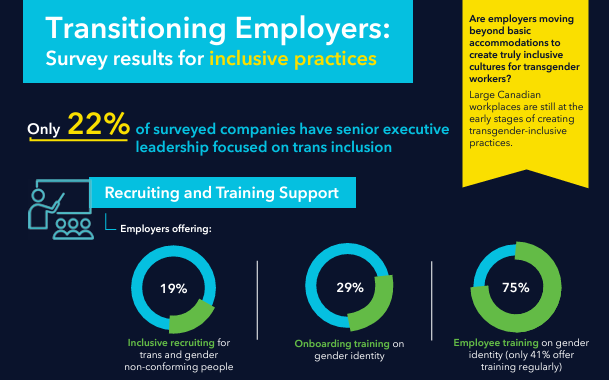|
Getting your Trinity Audio player ready...
|
Being a trans person in the job market is a hard sell. We’re too often told that “you’re not the right fit,” or “you’re an unconventional hire” – coded language for “We aren’t sure about hiring someone who is trans.”
Today, trans people in Canada are still disproportionately unemployed, underemployed or hiding who they are at work. Trans, non-binary and Two-Spirit people are denied employment opportunities at 3-5 times the rate of cisgender people, with 30% of trans women having been denied employment opportunities due to their gender within the past five years (Women & Gender Equality, 2023). We are five times more likely to live below the low-income cut-off – also known as the poverty line – than cisgender Canadians. These are issues that many of us continue to face each and every day in our careers.
This article was originally published on Pride at Work and has been republished with permission.
When Transgender Day of Visibility started in 2009, I was skeptical. Why visibility? My visibility has not done me many favours in life. In fact, my visibility is what denied me job and advancement opportunities and has led to experiences of violence. As time has gone on and we look back at 15 years of Trans Day of Visibility, I now see it as important to make our experiences as trans people visible.
Personally, I’ve been told I was the most qualified candidate, but I wasn’t the right fit only after I showed up openly trans in an interview. I’ve had employers explicitly state: “We don’t hire men for this job.” Even with a cisgender 2SLGBTQIA+ recruiter, I was told the only job I was qualified for was the entry-level job that people without any experience or education get hired for before I was hired at Pride at Work Canada.

In the 15 years since Trans Day of Visibility was created, we also see growth. In particular, there are legal protections now for gender identity and expression across the country, when there weren’t at the time. People can get X gender markers in all places except Nunavut, and you no longer need to undergo surgery to change your gender marker. We’ve also seen provinces and territories institute gender-affirming care programs as part of health care. There has been a lot of advancement, even if there are still struggles.
“Personally, I’ve been told I was the most qualified candidate, but I wasn’t the right fit only after I showed up openly trans in an interview.”
In other words, in my time doing this type of work, I’ve seen trans inclusion come a long way. We gained legal protections, we’ve gained additional access to healthcare (even if that healthcare could still improve) and workplaces have started to take trans employees seriously. In 2019, we partnered with the Institute of Gender and the Economy for the research Transitioning Employers: A survey of policies and practices for trans inclusive workplaces. Despite finding that many employers had a long way to go to be truly trans-inclusive, we also found that many had instituted practices toward inclusion, such as employee resource groups, trans-inclusive benefits and a trans inclusion policy.
Increasingly, I am finding that employers want to do the right thing when it comes to trans inclusion. This is a massive switch from when we were not on employers’ radar at all or when we could be fired merely on the basis of being trans. So, if you are an employer reading this and want some tips as to what to do for trans inclusion, here are three tips:
- Listen to our voices: Too rarely are trans people heard and listened to. Consider listening to our voices inside and outside the workplace. Find a trans podcast or video series, listen to trans people from your employee resource groups and engage with us intentionally.
- Keep learning: Consider ways that you could continue to learn about trans inclusion. For instance, consider attending SPARK 2025, watching our webinar series or reading Transitioning Employers.
- Make a change: Look at your policies and practices and consider which could be changed to be more trans-inclusive. Could you consider mentoring a trans professional or jobseeker?
I am consistently impressed by the knowledge, expertise and skill of fellow trans people. We are in every profession and every community. Surviving transphobia is difficult, but trans people are here to stay. Some of us are able to be more visible than others, and some of us don’t get a choice in whether we are visible, but what binds us is resilience. What changes our surviving to thriving is based on the community around us in the workplace and elsewhere.








Thank you for this insightful and necessary piece on building trans-inclusive workplaces. Creating spaces where everyone can thrive—not just survive—is essential for true equity and belonging. At The Cee Suite, we’re passionate about helping organizations embed inclusion into the core of their culture through impactful training and strategy. Resources like this article continue to inspire and reinforce the importance of that mission.
The Cee Suite
https://lifeintheceesuite.com .